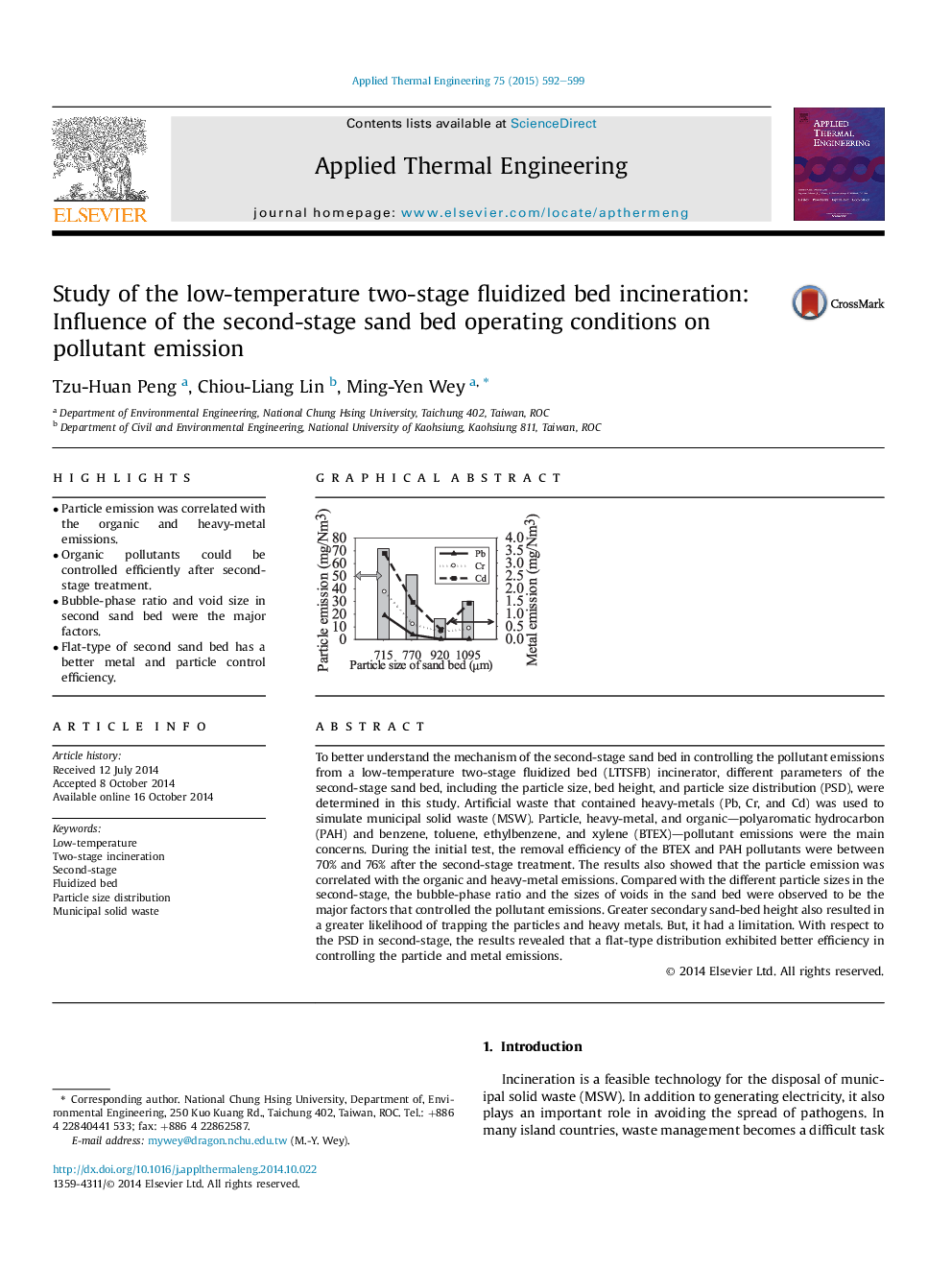| کد مقاله | کد نشریه | سال انتشار | مقاله انگلیسی | نسخه تمام متن |
|---|---|---|---|---|
| 645937 | 1457153 | 2015 | 8 صفحه PDF | دانلود رایگان |
• Particle emission was correlated with the organic and heavy-metal emissions.
• Organic pollutants could be controlled efficiently after second-stage treatment.
• Bubble-phase ratio and void size in second sand bed were the major factors.
• Flat-type of second sand bed has a better metal and particle control efficiency.
To better understand the mechanism of the second-stage sand bed in controlling the pollutant emissions from a low-temperature two-stage fluidized bed (LTTSFB) incinerator, different parameters of the second-stage sand bed, including the particle size, bed height, and particle size distribution (PSD), were determined in this study. Artificial waste that contained heavy-metals (Pb, Cr, and Cd) was used to simulate municipal solid waste (MSW). Particle, heavy-metal, and organic—polyaromatic hydrocarbon (PAH) and benzene, toluene, ethylbenzene, and xylene (BTEX)—pollutant emissions were the main concerns. During the initial test, the removal efficiency of the BTEX and PAH pollutants were between 70% and 76% after the second-stage treatment. The results also showed that the particle emission was correlated with the organic and heavy-metal emissions. Compared with the different particle sizes in the second-stage, the bubble-phase ratio and the sizes of voids in the sand bed were observed to be the major factors that controlled the pollutant emissions. Greater secondary sand-bed height also resulted in a greater likelihood of trapping the particles and heavy metals. But, it had a limitation. With respect to the PSD in second-stage, the results revealed that a flat-type distribution exhibited better efficiency in controlling the particle and metal emissions.
Figure optionsDownload as PowerPoint slide
Journal: Applied Thermal Engineering - Volume 75, 22 January 2015, Pages 592–599
